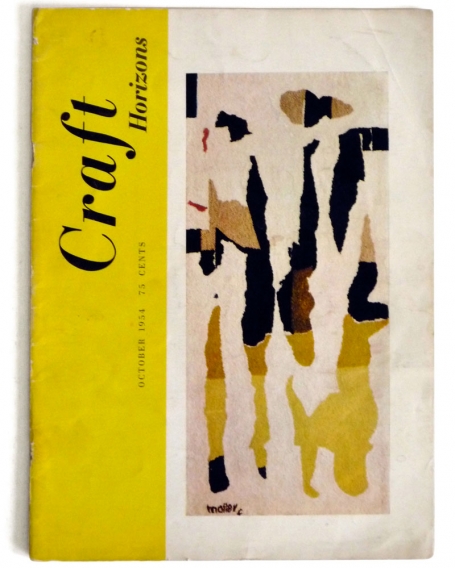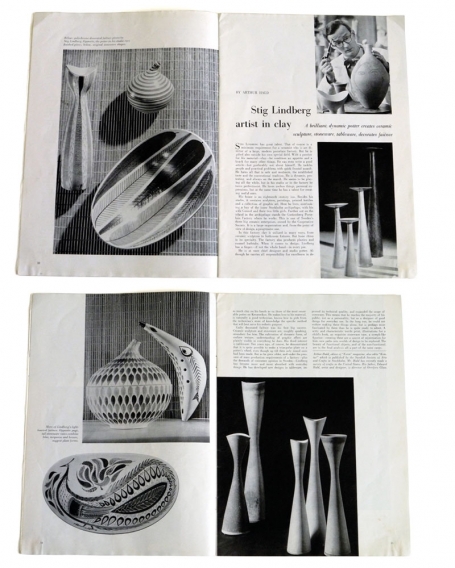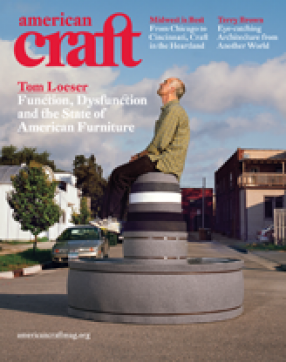Every issue we dig through our stacks to bring you the best of our past. Enjoy!
Tucked away on the sixth floor of 72 Spring Street in New York City is the American Craft Council library, one of the largest collections in this country of craft, art and design books documenting the studio craft movement from the 1940s to the present. The over 14,000 volumes include the Council’s 66-year publishing history—all past issues of Craft Horizons and American Craft. We’d like to share some of this amazing past with you each issue as we dig though the stacks. And if you happen to be in New York, come in and say hello—the library is open to the public.


Article by Arthur Hald, October 1954 issue of Craft Horizons.

In the October 1954 issue of Craft Horizons Arthur Hald, son of famed Orrefors Glass director Edward Hald, explored the life of Swedish ceramist Stig Lindberg, describing him as “one of the most convincing examples of design in our times.” The spirited, incisive piece provides a window into Lindberg’s personality, vision and versatility at the age of 38, while he was art director at Stockholm’s Gustavsberg Porcelain Factory.
Lindberg became renowned for his studio ceramics, graceful tableware lines and experimentation with other materials like textiles and glass. As one of Sweden’s major postwar designers, Lindberg, who died in 1982, was honored with a major exhibition in 2006 at the Swedish National Museum of Fine Arts in Stockholm.
Today, both Lindberg’s one-off and factory-produced ceramics can be found, among other places, at Freeforms and Good Design, both located in New York, and Stockholm’s Modernity. Favored by the design-savvy, Lindberg’s work nevertheless appeals to a broad span of collectors, including architects and designers.
While many designers may have been influenced by Lindberg, David Mann of Freeforms says that the work of Jonathan Adler is perhaps most reminiscent of the Swedish dynamo, in form and palette, if not material. A “brand strategist,” according to the Swedish National Museum, Lindberg himself might have taken issue with Adler’s similarity, as he was very attuned to how the craft industry dealt with authorial copyrights, conceivably to the detriment of fellow artisans.




